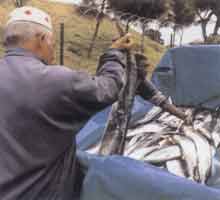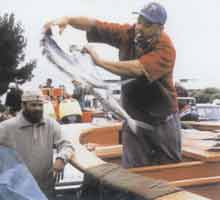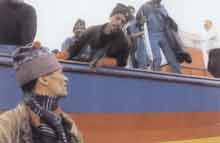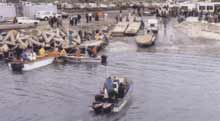Financial Impact on commercial fishermen |
|
|
...1000 fishermen tend to come from a section of the community with limited other job oppurtunities. |
Big numbers at a typical 'snoek run'
It is not uncommon for 120 boats to use the OPBC slipway when a 'snoek run' is taking place. These boats can, and often do, land in excess of 400 fish each, which commonly sell for R12 apiece. This realises a street value in excess of R576 000 per day! This income is directed at a group of workers who have few other prospects for earning a living.  Fishing generates a living for thousands of Capetonians There are more than 140 ski boats registered as commercial fishing vessels in the Cape Peninsula, each carrying a crew of six to eight people. This group of approximately 1 000 fishermen tends to come from a section of the community with limited other job opportunities.  Knock-on effect The majority of the catch earned on these vessels is sold through a network of self-employed hawkers spread around the greater Cape Town area, estimated at over 250 people. The closure of the OPBC slipway would directly affect the earning potential of these workers.  Increasing catches through OPBC slipway Most recent available statistics indicate an annual fish haul of 784 tonnes during 1998 through the OPBC slipway. This figure is a 17% increase over the previous year and unaudited indications are that this increasing trend is continuing.  Support from independent bodies
Various organisations, including the Cape Peninsula Commercial Fishing Community and the South African Commercial Fishermen's Co-op, have indicated their support for the continued use of the OPBC slipway. The unavailability of the OPBC would effectively cut this group's income by a third and could be the death knell for the viability of the small-scale fishing industry.
Support from independent bodies
Various organisations, including the Cape Peninsula Commercial Fishing Community and the South African Commercial Fishermen's Co-op, have indicated their support for the continued use of the OPBC slipway. The unavailability of the OPBC would effectively cut this group's income by a third and could be the death knell for the viability of the small-scale fishing industry.
|